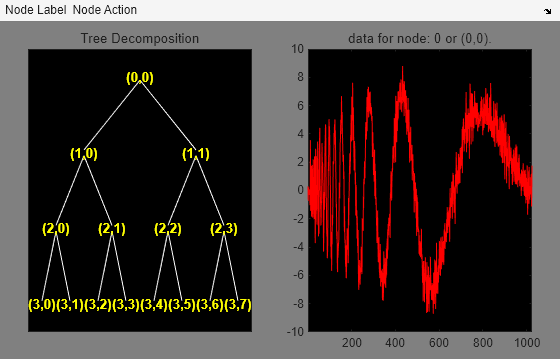wpdec
Wavelet packet decomposition 1-D
Description
Examples
Input Arguments
More About
Tips
To obtain the wavelet packet transform of a 1-D multisignal, use
dwpt.
Algorithms
The algorithm used for the wavelet packets decomposition follows the same line as the
wavelet decomposition process (see dwt and wavedec for more information).
References
[1] Coifman, R.R., and M.V. Wickerhauser. “Entropy-Based Algorithms for Best Basis Selection.” IEEE Transactions on Information Theory 38, no. 2 (March 1992): 713–18. https://doi.org/10.1109/18.119732.
[2] Meyer, Yves. Les ondelettes. Algorithmes et applications, Colin Ed., Paris, 2nd edition, 1994. (English translation: Wavelets: Algorithms and Applications, SIAM).
[3] Wickerhauser, M.V. "INRIA lectures on wavelet packet algorithms." Proceedings ondelettes et paquets d'ondes, 17–21 June 1991, Rocquencourt, France, pp. 31–99.
[4] Wickerhauser, Mladen Victor. Adapted Wavelet Analysis from Theory to Software. Wellesley, MA: A.K. Peters, 1994.
Version History
Introduced before R2006a
